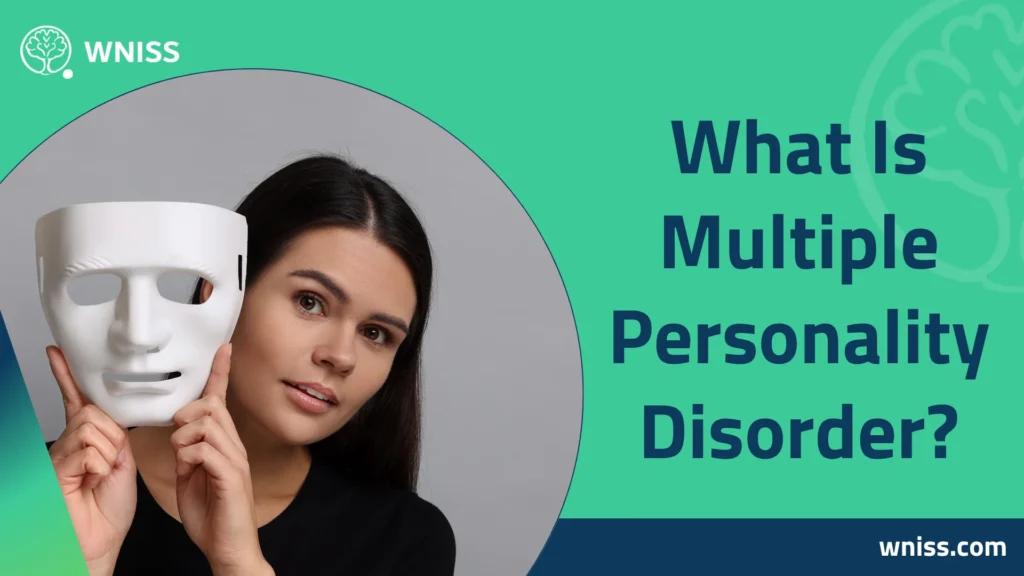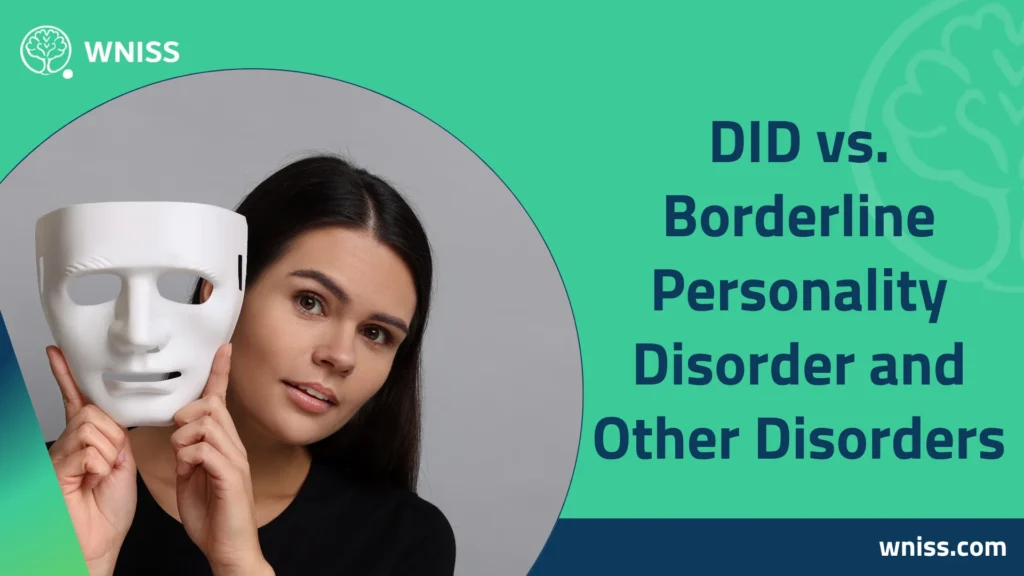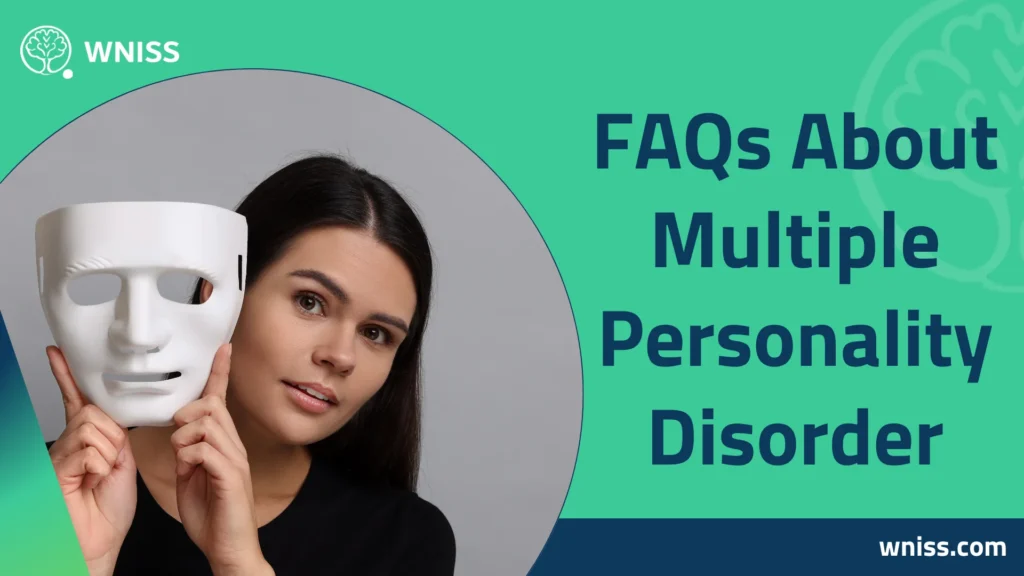Multiple personality disorder, now officially recognized as dissociative identity disorder, is among the most misunderstood mental health conditions. While often sensationalized in movies and media, the reality of living with this disorder is far more complex. People with multiple personality disorder experience the presence of two or more distinct identities, or “alters,” within the same person, each with its own memories, thoughts, and behaviors. These shifts are not under voluntary control and can severely impact daily life, relationships, and emotional stability.
- Dissociative identity disorder typically develops as a coping mechanism in response to severe trauma, usually during early childhood.
- Alters (the different personalities) may vary in age, gender, or behaviors and take control at different times.
- Memory gaps are common, with individuals often unable to recall personal details or actions taken while another identity was in control.
Narratively, imagine waking up in a location you don’t remember traveling to or finding yourself holding unfamiliar items with no idea how you obtained them. This is the disorienting experience many with identity disorder face regularly.
What Is Multiple Personality Disorder?
Defining what is MPD disorder requires understanding that the term “multiple personality disorder” is now considered outdated in psychiatric practice. Today, the correct term is dissociative identity disorder (DID), classified under dissociative disorder in the Diagnostic and Statistical Manual of Mental Disorders. However, many still use the older term interchangeably.

- Dissociative identity disorder involves the disruption of identity characterized by the presence of two or more distinct personality states.
- This disruption affects memory, consciousness, self-awareness, and perception.
- The person may experience amnesia, gaps in everyday memory, and a profound sense of detachment from themselves.
Narratively, DID is not about pretending or choosing to act differently—it’s an involuntary and deeply rooted condition formed by the mind’s attempt to protect itself from unbearable trauma. Each identity serves a psychological purpose, helping the person compartmentalize overwhelming experiences.
Causes of Dissociative Identity Disorder: Origins of Fragmentation
While many theories exist about the development of multiple personality disorder, most mental health professionals agree that it is a severe reaction to prolonged trauma during early childhood. Understanding how dissociative identity disorder forms helps explain the complicated symptom patterns.
Common causes include:
- Chronic emotional, physical, or sexual abuse in childhood.
- Neglect or absence of consistent caregivers, resulting in emotional abandonment.
- Exposure to frightening or overwhelming events without supportive intervention.
Narratively, when children cannot escape traumatic experiences, their minds may create alternate identities to survive. One identity might carry painful memories, while another remains unaware, allowing the person to function in daily life without being constantly overwhelmed by trauma.
Recognizing the Symptoms of Multiple Personality Disorder
The symptoms of multiple personality disorder go far beyond occasional forgetfulness or mood swings. The diagnostic criteria for dissociative identity disorder include a distinct set of symptoms that seriously disrupt a person’s sense of self and reality.
Key symptoms include:
- Presence of two or more distinct identities (alters), each with unique names, voices, ages, or behaviors.
- Recurrent memory gaps not explained by normal forgetfulness.
- Dissociation, leading to feeling detached from one’s thoughts, body, or surroundings.
- Episodes of losing time, where the person cannot recall actions or events.
- Sudden changes in attitudes, skills, or interests, reflecting a shift to a different alter.
Narratively, a person may shift from a confident adult identity to a frightened child alter without conscious control, confusing both themselves and those around them.
Multiple Personality Disorder Test: The Diagnostic Process
There is no single multiple personality disorder test that can confirm a diagnosis. Instead, mental health professionals use structured interviews, questionnaires, and careful observation over time to assess for dissociative identity disorder.
- The Structured Clinical Interview for DSM Dissociative Disorders (SCID-D) is commonly used in clinical settings.
- Clinicians gather extensive patient history, focusing on trauma exposure, dissociation episodes, memory gaps, and identity shifts.
- Diagnosis may take months or years due to the complexity of the disorder and frequent misdiagnosis.
Narratively, many individuals initially receive incorrect diagnoses such as borderline personality disorder or type A personality disorder, delaying appropriate treatment for DID. Comprehensive assessment is crucial for accurate diagnosis and effective intervention.
DID vs. Borderline Personality Disorder and Other Disorders
Confusion between multiple personality disorder and other conditions is common, particularly when compared to borderline personality disorder or type A personality disorder.

- In borderline personality disorder, identity disturbances involve unstable self-image and intense fear of abandonment but do not include distinct alters or memory gaps.
- Type A personality disorder is not a clinical diagnosis but rather a description of personality traits such as competitiveness and impatience, unrelated to dissociative symptoms.
- Schizophrenia, sometimes confused with DID, involves psychotic symptoms like hallucinations and delusions rather than identity fragmentation.
Narratively, people may wrongly assume that switching between moods or feeling emotionally unstable equates to having DID. However, genuine dissociative identity disorder involves clear shifts between separate identities, along with severe dissociation.
Treatment of Dissociative Identity Disorder
The treatment of multiple personality disorder, or dissociative identity disorder, is long-term and complex. Therapy focuses on helping individuals integrate their alters, improve emotional regulation, and process traumatic memories safely.
Common treatment methods include:
- Trauma-focused psychotherapy, particularly approaches like Cognitive Behavioral Therapy (CBT) and Eye Movement Desensitization and Reprocessing (EMDR).
- Dialectical Behavior Therapy (DBT) techniques to manage emotional dysregulation.
- Building trust and cooperation between alters through parts work therapy.
- Medication, prescribed to treat co-occurring anxiety, depression, or PTSD symptoms rather than DID itself.
Narratively, recovery from DID doesn’t mean “eliminating” identities but fostering cooperation between alters and gradually integrating them into a unified sense of self where possible.
Living with Multiple Personality Disorder: Challenges and Misconceptions
Living with multiple personality disorder means navigating daily life with disruptions in memory, identity, and awareness. Challenges include:
- Explaining dissociative episodes to others.
- Coping with social stigma and misunderstandings.
- Managing co-occurring conditions like depression, anxiety, and PTSD.
- Dealing with the unpredictability of identity shifts.
Narratively, many individuals with DID lead fulfilling lives, holding jobs, raising families, and maintaining relationships. However, doing so requires constant management of dissociative episodes and ongoing therapy.
FAQs About Multiple Personality Disorder

Can you live normal life with DID?
Yes. Many individuals with dissociative identity disorder can live fulfilling, functional lives with proper therapy, support, and coping strategies. However, daily management of dissociation and alters is often required.
What is an example of DID?
A person with DID might shift from a confident adult identity to a fearful child alter without conscious control. Each alter may have unique handwriting, speech patterns, or preferences, and memory gaps often occur during these shifts.
Is DID the same as schizophrenia?
No. DID, previously called multiple personality disorder, involves identity fragmentation, while schizophrenia is a psychotic disorder characterized by hallucinations and delusions. They are distinct diagnoses with different treatments.
How to deal with a person with split personality?
Patience, empathy, and encouraging professional therapy are key. Avoid confronting alters aggressively. Instead, listen calmly, respect each identity, and support the person in seeking consistent mental health treatment.
Can someone fully recover from DID?
Recovery is possible but often involves long-term therapy. Some individuals achieve integration of their identities into a cohesive whole, while others learn to manage and cooperate with their alters without full integration.
Can people with DID control?
Most people with DID cannot consciously control when alters emerge. However, therapy can help individuals develop internal communication between identities and reduce disruptive switching over time.
In conclusion, multiple personality disorder, now known as dissociative identity disorder, is a complex and often misunderstood condition rooted in severe trauma and dissociation. Unlike mood disorders like borderline personality disorder or simple personality traits such as type A personality disorder, DID involves distinct identities and profound disruptions in consciousness and memory. While popular myths portray DID as dramatic or dangerous, the reality is that individuals with this dissociative disorder are survivors of overwhelming trauma, using psychological mechanisms to protect themselves. With proper therapy and support, those affected can lead meaningful, connected lives. Ultimately, understanding the reality behind multiple personality disorder dismantles harmful myths and opens doors to compassion, accurate diagnosis, and effective treatment.




